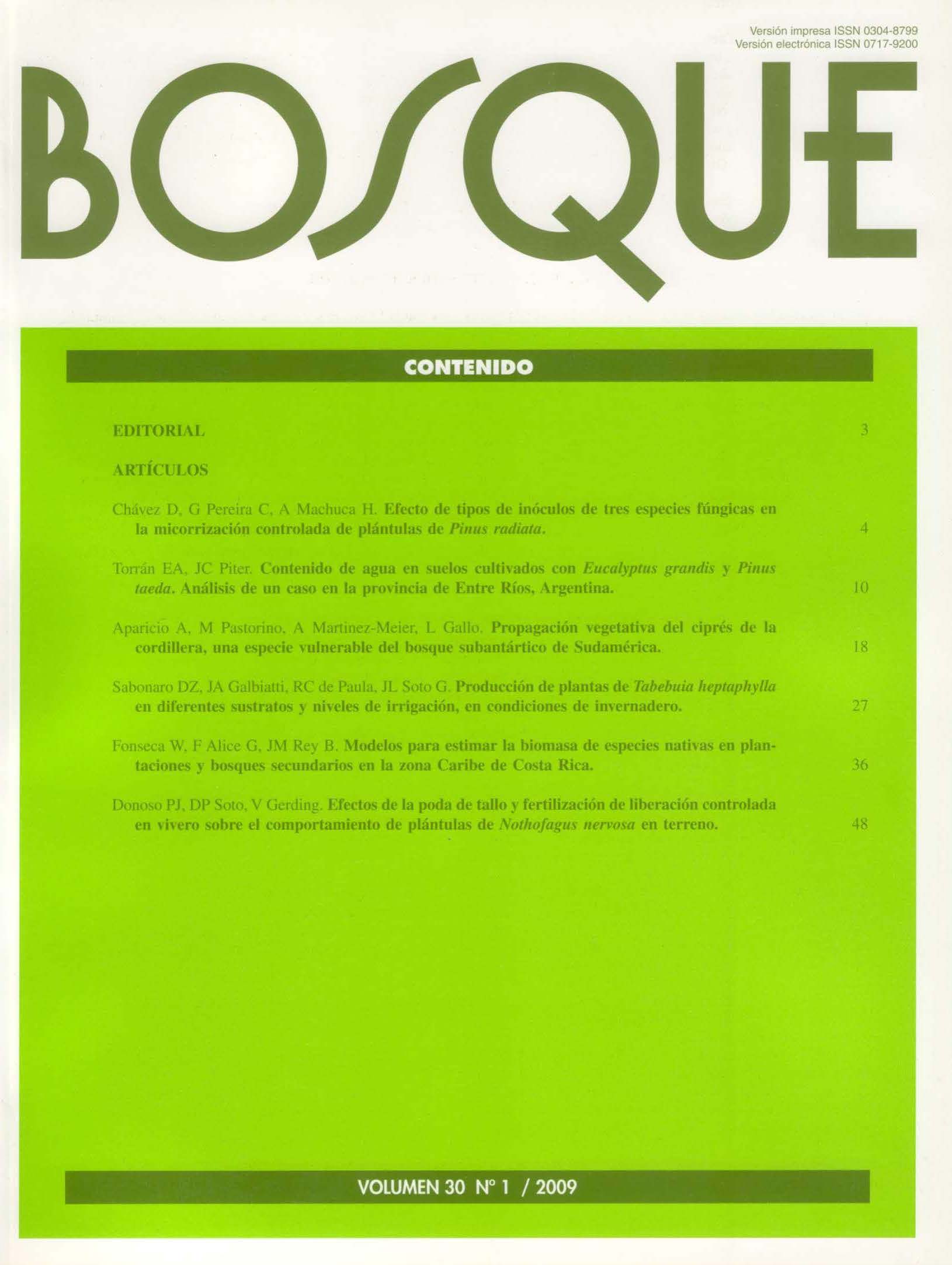Main Article Content
Apr 30, 2009
Abstract
The objective of this research was to evaluate the growth of Tabebuia heptaphylla seedlings in distinct substrates with different amounts of urban waste compost and the relation between this growth and irrigation. A completely randomized experimental design was used, with a factorial arrangement of 15 substrates and 2 irrigation levels. The substrates were composed by the combination of different materials: urban waste, tanned cattle manure, vermiculite, soil and the commercial form Plantmax®. For the study of the seedlings development, the following characteristics were evaluated: plant height, stem diameter at soil level, number of leaves, above ground dry matter, root system dry matter, relation between plant height and stem base diameter, Dickson quality index and relation between plant height and above ground dry matter. Evaluations of plant height, stem diameter at soil level and number of leaves were made at 75, 90, 105, 120, 135 and 150 days after sowing. According to the results, it was concluded that urban waste compost does not increase plant development. Significant differences in relation to the irrigation levels were found, with better results for the 150% irrigation level compared to 100% evapotranspiration.


